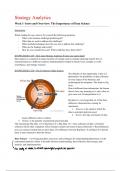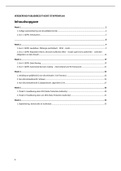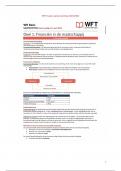College aantekeningen
Strategy Analytics Notes + Book
- Vak
- Instelling
- Boek
The document has all my notes from the classes and videos. I integrated all the book parts that were missing from the lectures, but I would recommend reading the chapter the professor requires before class, it makes things easier. The case studies are missing. My final grade for the exam was 8,42, ...
[Meer zien]










